French Alps Ski Resorts: Top Destinations for Winter Sports in 2025
Advertisements
Bonjour mes amis! It's Chloe, your French Alps insider who's been skiing these majestic slopes since childhood. Watching winter tourists struggle to find the perfect resort inspired me to create this comprehensive guide covering everything from French Alps ski resorts map to budget-friendly French Alps ski resorts prices. Having taught dozens of beginners at family-friendly French Alps ski resorts for beginners, I'll share local secrets you won't find in typical travel brochures. Let me help you navigate our snowy paradise like a true Savoyard!
Table of Contents
Geographical Location
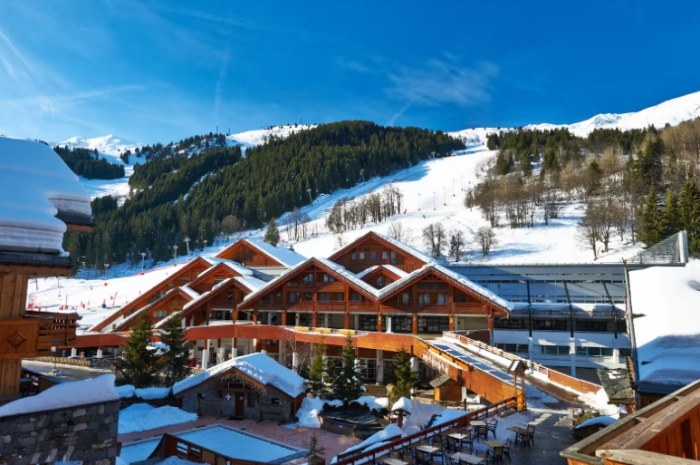
Overview of the French Alps
The French Alps stretch across southeastern France, bordering Switzerland and Italy. This mountain range is part of the larger Alpine system, which spans multiple European countries. The French Alps are renowned for their towering peaks, including Mont Blanc, the highest mountain in Western Europe. The region is divided into several sub-ranges, each offering unique skiing experiences.
Key Sub-Ranges and Their Resorts
- Haute-Savoie: Home to some of the most famous ski resorts, such as Chamonix, Courchevel, and Méribel. This area is known for its high-altitude skiing and challenging runs.
- Savoie: Features resorts like Val Thorens, Tignes, and Les Arcs. Savoie offers a mix of beginner-friendly slopes and advanced terrain.
- Isère: Includes Alpe d'Huez and Les Deux Alpes, famous for their long seasons and extensive glacier skiing.
- Alpes-Maritimes: Hosts resorts like Isola 2000, which is popular for its southern location and relatively mild winters.
Transportation
Getting to the French Alps
- Air Travel: The closest major airports to the French Alps are Geneva (GVA) in Switzerland, Lyon (LYS) in France, and Grenoble (GNB). From these airports, you can take shuttle buses, rent a car, or arrange private transfers to your chosen ski resort.
- Train Travel: The TGV (Train à Grande Vitesse) provides high-speed rail service to cities like Lyon, Grenoble, and Chambéry. From there, you can transfer to local trains or buses that connect to the ski resorts.
- Car Travel: If you prefer the flexibility of driving, you can rent a car at the airport or drive from your home country. However, be prepared for mountainous roads and winter driving conditions.
Local Transportation Within Resorts
- Ski Buses: Most ski resorts offer free or low-cost ski buses that shuttle visitors between different parts of the resort, including the ski lifts, town center, and accommodation areas.
- Shuttles: Some resorts provide shuttle services to nearby villages or other ski areas within the same region.
- Taxis and Private Transfers: For more convenience, you can hire a taxi or arrange a private transfer, especially if you're traveling with a group or have a lot of luggage.
Different Demographics and Snowfield Choices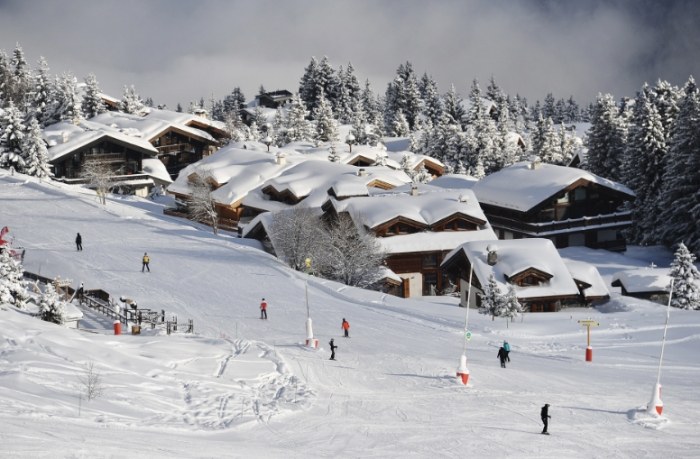
Beginners
- Les Gets: This family-friendly resort in the Portes du Soleil ski area offers gentle slopes and excellent ski schools. It's perfect for beginners and children.
- Avoriaz: Part of the same ski area as Les Gets, Avoriaz is a car-free resort with a variety of beginner slopes and a fun snowpark.
- La Clusaz: Known for its charming village and beginner-friendly terrain, La Clusaz is a great option for those just starting out.
Intermediates
- Val d'Isère: With a vast network of blue and red runs, Val d'Isère is a paradise for intermediate skiers. The resort also offers access to the Espace Killy ski area, which includes Tignes.
- Morzine: Located in the Portes du Soleil, Morzine has a good mix of intermediate slopes and stunning views of the surrounding mountains.
- Serre Chevalier: This resort in the Hautes-Alpes department offers a variety of intermediate runs and a lively après-ski scene.
Advanced Skiers and Snowboarders
- Chamonix: Famous for its challenging off-piste terrain and steep slopes, Chamonix is a mecca for advanced skiers and snowboarders. The Vallée Blanche, a long and technical off-piste run, is a must-do for experienced riders.
- La Grave: Known for its extreme skiing and lack of groomed runs, La Grave is not for the faint of heart. It's a paradise for those seeking a true adventure.
- Les Deux Alpes: With its extensive glacier skiing and challenging black runs, Les Deux Alpes is a popular choice for advanced skiers and snowboarders.
Families
- Peisey-Vallandry: Part of the Paradiski ski area, Peisey-Vallandry offers a range of activities for families, including a snow garden for children, gentle slopes, and a variety of accommodation options.
- Alpe d'Huez: Known for its sunny slopes and family-friendly atmosphere, Alpe d'Huez has a dedicated children's area and a variety of activities to keep the whole family entertained.
- Saint-Martin-de-Belleville: This traditional Savoyard village offers a peaceful and family-friendly skiing experience, with a good selection of beginner and intermediate slopes.
Suitable Seasons
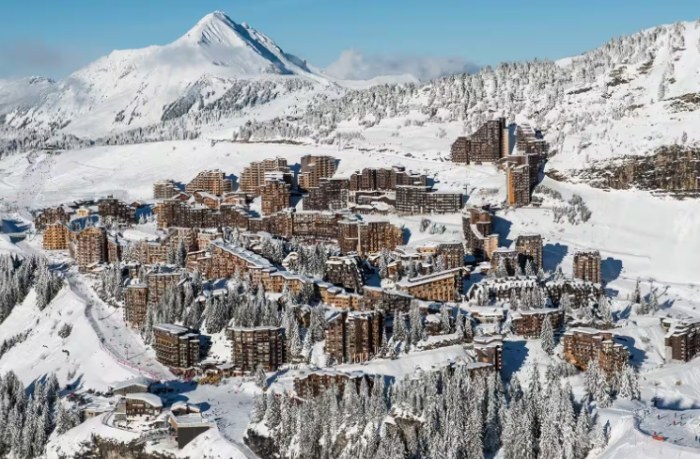
Winter Season
The main ski season in the French Alps runs from December to April, with the best snow conditions typically found in January and February. During this time, all the ski resorts are fully operational, with a wide range of slopes and lifts open.
Early Season (November - Early December)
Some high-altitude resorts, such as Val Thorens and Tignes, open their glaciers in November, offering early-season skiing for enthusiasts. However, snow conditions can be variable, and not all slopes may be open.
Late Season (April - May)
In April and May, many resorts start to close as the snow begins to melt. However, some high-altitude resorts, like Val Thorens, can remain open until early May, offering spring skiing with longer days and milder temperatures.
Pricing
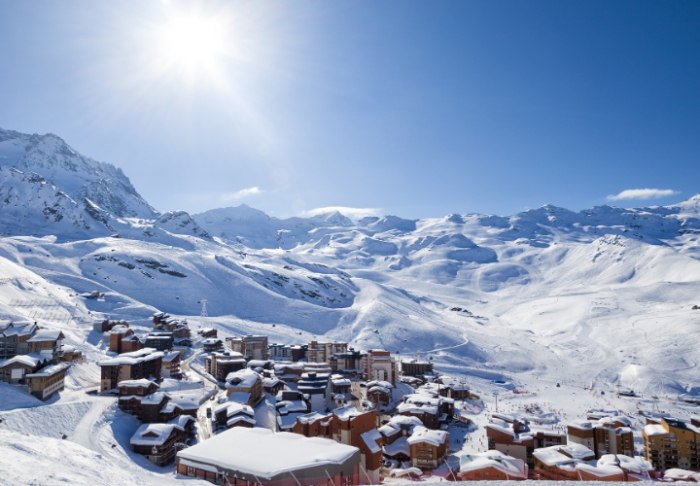
Lift Passes
Lift pass prices vary depending on the resort, the duration of the pass, and the time of year. On average, a one-day lift pass can cost anywhere from €30 to €70, while a six-day pass can range from €200 to €400. Some resorts offer discounts for children, seniors, and groups.
Accommodation
Accommodation prices in the French Alps also vary widely, depending on the type of accommodation, the location, and the time of year. During the peak season, prices can be quite high, especially in popular resorts like Chamonix and Courchevel. However, you can find more affordable options in smaller villages or by booking in advance.
Equipment Rental
Renting ski or snowboard equipment is a convenient option for many visitors. Prices for equipment rental typically range from €20 to €40 per day, depending on the quality of the equipment and the resort. Some resorts offer package deals that include lift passes and equipment rental.
Accommodation
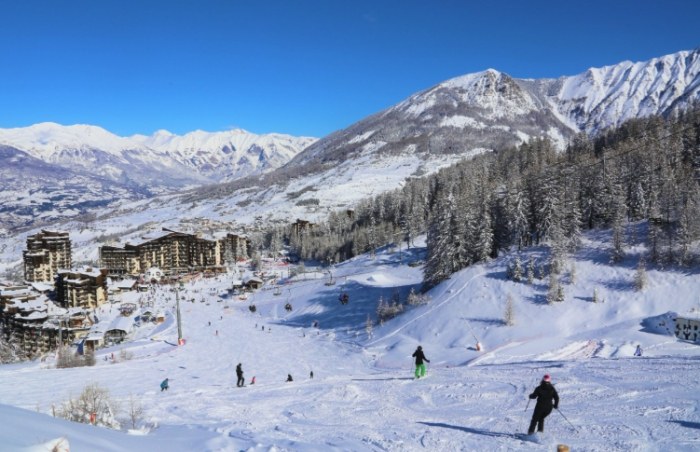
Luxury Chalets and Hotels
For those seeking a luxurious experience, the French Alps offer a wide range of high-end chalets and hotels. These accommodations often come with amenities such as private pools, spas, and gourmet dining. Popular luxury resorts include Courchevel, Méribel, and Val d'Isère.
Mid-Range Apartments and Chalets
If you're looking for a more affordable option, mid-range apartments and chalets are a great choice. These accommodations provide a comfortable and convenient base for your skiing holiday, with options for self-catering or half-board meals. You can find a variety of mid-range accommodations in most ski resorts.
Budget Hostels and Guesthouses
For budget-conscious travelers, hostels and guesthouses offer a cost-effective way to stay in the French Alps. These accommodations typically provide basic facilities and shared rooms, but they can be a great way to meet other skiers and snowboarders. Some popular budget options include YHA hostels and family-run guesthouses.
Equipment
Essential Ski and Snowboard Gear
- Skis or Snowboard: Choose the right equipment based on your skill level and the type of terrain you plan to ski or snowboard. Beginners may prefer shorter, more forgiving skis or boards, while advanced riders may opt for longer, more specialized equipment.
- Boots: Properly fitting boots are essential for comfort and control. Make sure to try on several pairs before making a purchase or rental.
- Bindings: Bindings connect your boots to your skis or snowboard. They should be adjusted correctly to ensure safety and performance.
- Poles: Poles are used for balance and propulsion while skiing. Choose poles that are the right length for your height and skiing style.
Protective Gear
- Helmet: A helmet is a must-have for all skiers and snowboarders. It can protect your head in case of a fall or collision.
- Goggles: Goggles protect your eyes from the sun, wind, and snow. Look for goggles with good UV protection and anti-fog features.
- Gloves or Mittens: Keep your hands warm and dry with a good pair of gloves or mittens. Look for waterproof and insulated options.
- Back Protector: For advanced skiers and snowboarders, a back protector can provide additional protection in case of a fall.
Clothing
- Ski Jacket and Pants: Choose waterproof and breathable outerwear to keep you dry and comfortable on the slopes. Look for jackets and pants with insulation for added warmth.
- Base Layers: Wear moisture-wicking base layers to keep your body dry and regulate your temperature.
- Mid-Layers: Add a mid-layer, such as a fleece or down jacket, for extra warmth on cold days.
- Socks: Invest in a good pair of ski socks that are thick, warm, and moisture-wicking. Avoid cotton socks, as they can retain moisture and make your feet cold.
Peripheral Delicacies
Traditional Savoyard Cuisine
The French Alps are known for their hearty and delicious Savoyard cuisine. Some must-try dishes include:
- Fondue: A classic dish made with melted cheese, wine, and garlic, served with bread cubes for dipping.
- Raclette: Another cheese-based dish, where melted raclette cheese is scraped onto potatoes, cured meats, and pickles.
- Tartiflette: A potato and cheese gratin with bacon and onions, a perfect comfort food for a cold winter day.
Local Wines and Spirits
- Vin de Savoie: A light and refreshing white wine made from local grape varieties, perfect for pairing with Savoyard cuisine.
- Génépi: A herbal liqueur made from the génépi plant, which grows in the Alps. It's often enjoyed as a digestif after a meal.
Après-Ski Snacks and Drinks
- Vin Chaud: Mulled wine, a popular après-ski drink that warms you up after a day on the slopes.
- Croissants and Pain au Chocolat: Grab a freshly baked croissant or pain au chocolat from a local bakery for a quick and delicious snack.
- Charcuterie and Cheese Platters: Enjoy a selection of local cured meats and cheeses with a glass of wine at a mountain hut or après-ski bar.
Safety Notes
Pre-Ski Preparations
- Check the Weather and Snow Conditions: Before heading out, check the weather forecast and snow conditions to ensure safe skiing. Avoid skiing in heavy snow, strong winds, or poor visibility.
- Warm Up and Stretch: Do some warm-up exercises and stretching before hitting the slopes to prevent injuries.
- Know Your Limits: Stick to slopes that match your skill level and avoid taking unnecessary risks.
On-Slope Safety
- Follow the Skiers' Responsibility Code: Always ski in control, yield to others, and stay on marked trails.
- Wear a Helmet: As mentioned earlier, a helmet is essential for protecting your head in case of a fall or collision.
- Be Aware of Your Surroundings: Keep an eye out for other skiers, snowboarders, and obstacles on the slopes.
- Avoid Off-Piste Skiing Without a Guide: Off-piste skiing can be dangerous, especially in unfamiliar terrain. Always go with a qualified guide and carry the necessary safety equipment, such as a transceiver, shovel, and probe.
Emergency Procedures
- Know the Emergency Number: In France, the emergency number is 112. Keep it handy in case of an emergency.
- Carry a First Aid Kit: A basic first aid kit can be useful for treating minor injuries.
- Stay Calm and Follow Instructions: If you're involved in an accident or witness one, stay calm and follow the instructions of the ski patrol or emergency services.
Q&A
1. How many ski resorts are in French Alps?
There are over 200 ski resorts in the French Alps, ranging from small, family-friendly villages to large, world-class destinations. Each resort offers its own unique charm and skiing experience.
2. What are the top 10 ski resorts in France?
Here is a table listing the top 10 ski resorts in France, based on factors such as terrain, amenities, and popularity:
| Rank | Resort Name | Location | Key Features |
| 1 | Chamonix | Haute-Savoie | Challenging off-piste terrain, stunning views of Mont Blanc |
| 2 | Val d'Isère | Savoie | Vast network of slopes, access to Espace Killy ski area |
| 3 | Courchevel | Savoie | Luxury accommodations, excellent ski schools, family-friendly atmosphere |
| 4 | Méribel | Savoie | Part of the Three Valleys ski area, charming village, good for all levels |
| 5 | Tignes | Savoie | High-altitude resort, extensive glacier skiing, part of Espace Killy |
| 6 | Alpe d'Huez | Isère | Sunny slopes, long season, family-friendly activities |
| 7 | Les Deux Alpes | Isère | Extensive glacier skiing, challenging black runs, lively après-ski scene |
| 8 | Val Thorens | Savoie | Highest ski resort in Europe, long season, excellent snow conditions |
| 9 | Les Arcs | Savoie | Part of the Paradiski ski area, modern lifts, stunning views |
| 10 | Avoriaz | Haute-Savoie | Car-free resort, excellent snowpark, family-friendly atmosphere |
3. What is the most charming ski village in France?
One of the most charming ski villages in France is Saint-Martin-de-Belleville. This traditional Savoyard village offers a peaceful and authentic skiing experience, with a good selection of beginner and intermediate slopes. The village is known for its picturesque stone houses, local cuisine, and friendly atmosphere.
4. What is the best ski resort in the Alps?
Determining the "best" ski resort in the Alps is subjective and depends on individual preferences. However, Chamonix is often considered one of the top ski resorts in the Alps due to its challenging terrain, stunning views of Mont Blanc, and vibrant après-ski scene. Other popular choices include Val d'Isère, Courchevel, and Zermatt (which is in Switzerland but part of the same mountain range).
In conclusion, the French Alps offer an unparalleled skiing and snowboarding experience for visitors of all levels. With its diverse terrain, stunning landscapes, rich cultural heritage, and delicious cuisine, this region is a must-visit destination for winter sports enthusiasts. Whether you're a beginner looking to learn the basics or an advanced rider seeking a challenge, the French Alps have something to offer everyone.
Advertisements